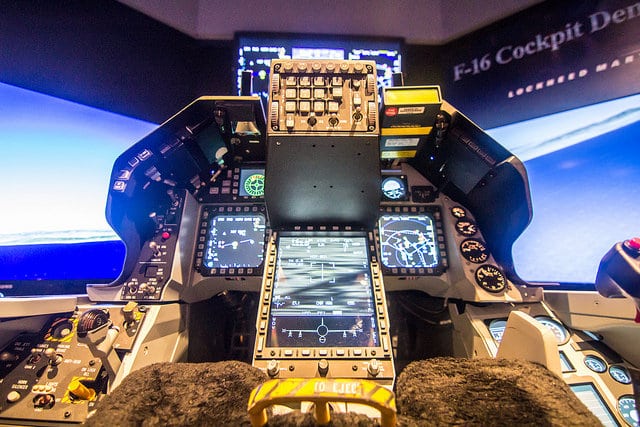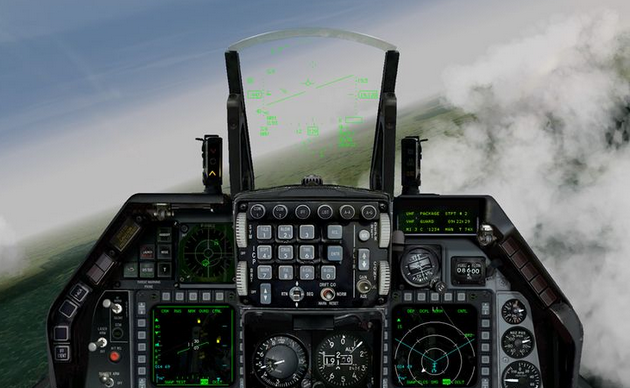Explore the F16 Cockpit
The cockpit of the F-16 Fighting Falcon, also known as the "Viper," is a well-organized and advanced space designed for the pilot to operate the aircraft effectively. While the specific layout may vary slightly depending on the version and configuration of the F-16, here's an overview of the typical components you would find in the F-16 cockpit.
F-16 cockpit layout

- Instrument Panel: The instrument panel in front of the pilot displays essential flight instruments, including airspeed, altitude, attitude, heading, and navigation data. These instruments provide crucial information for safe and effective flight.
- Head-Up Display (HUD): The HUD is a transparent display that projects critical flight and targeting information onto a glass panel in the pilot's field of view. This allows the pilot to maintain situational awareness without having to look down at instruments.
- Control Stick: The control stick is usually located on the right side of the cockpit and is used for flight control, including roll, pitch, and yaw. The F-16 uses a side-stick controller.
- Throttle and Engine Controls: The throttle is typically on the left side of the cockpit and is used to control engine power. The pilot can adjust the engine thrust as needed.
- Multi-Function Displays (MFDs): The F-16 features multiple color MFDs that display various system information, including radar data, navigation, weapons status, and other mission-critical data. These screens are often menu-driven and provide a versatile interface for interacting with the aircraft's systems.
- Avionics and Radar Controls: A control panel allows the pilot to operate and adjust the radar system, communication equipment, and other avionics.
- Ejection Seat: The F-16 is equipped with an ejection seat, a crucial safety feature that allows the pilot to quickly exit the aircraft in emergencies.
- Canopy Jettison Handle: In emergencies, the canopy can be jettisoned using this handle, allowing the pilot to exit the aircraft rapidly.
- Emergency Systems: Various emergency systems and controls, such as fire suppression, oxygen supply, and emergency communication equipment, are accessible within the cockpit.
- External Lighting Controls: Controls for external lighting, including navigation lights, anti-collision lights, and weapon targeting lights, are usually on the cockpit's sides.
- Cockpit Display Controls: These controls enable the pilot to select and adjust the information displayed on the MFDs and HUD.
- Switches and Knobs: The cockpit features numerous switches and knobs for various systems, such as communication, navigation, and weapons control.
- Canopy and Sun Visors: The canopy can be opened for pilot ingress and egress, and sun visors can be used to reduce glare from the sun.
- Crew Restraint Systems: The pilot is secured in the cockpit using restraints, including a harness and helmet-mounted display.
F16 Cockpit view
The F-16 cockpit is designed to be ergonomic and highly functional, providing the pilot with quick access to critical information and controls during combat and other missions. It offers an environment optimized for the demands of modern air combat.




Go up

Deja una respuesta